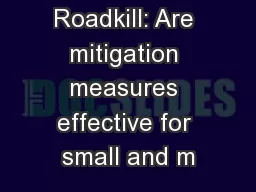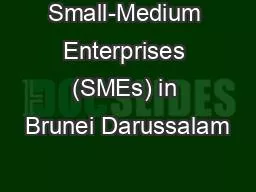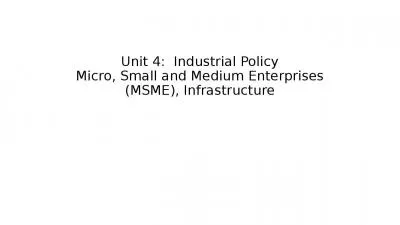Small to medium enterprises definition Small to
Author : alida-meadow | Published Date : 2025-06-23
Description: Small to medium enterprises definition Small to medium enterprises SMEs are the most common businesses in Australia These businesses play a key role in the provision of goods and services for the general public provide employment
Presentation Embed Code
Download Presentation
Download
Presentation The PPT/PDF document
"Small to medium enterprises definition Small to" is the property of its rightful owner.
Permission is granted to download and print the materials on this website for personal, non-commercial use only,
and to display it on your personal computer provided you do not modify the materials and that you retain all
copyright notices contained in the materials. By downloading content from our website, you accept the terms of
this agreement.
Transcript:Small to medium enterprises definition Small to:
Small to medium enterprises definition Small to medium enterprises (SMEs) are the most common businesses in Australia. These businesses play a key role in the provision of goods and services for the general public, provide employment, foster innovation and productivity improvements, supply inputs to larger businesses, serve the interests of local communities and facilitate growth in the Australian economy. Businesses in Australia may also be classified according to legal structure. These include unincorporated entities such as sole traders and partnerships, as well as incorporated entities such as private companies and public companies, trusts, religious organisations, government-owned businesses and other legal providers of goods and services. Most small to medium businesses are unincorporated businesses and incorporated private companies. In each case, they would tend to be closely controlled by the actual owners who manage the business and supply most of the capital to begin the business The actual definition used becomes important for legal issues such as the application of unfair dismissal laws and the differing requirements of SMEs, especially small business, as compared to large businesses. Role Small to medium enterprises (SMEs) operate in many different industries throughout the Australian economy. Current ABS statistics show the following. SMEs play a significant role in agriculture, which accounts for 8.4% of all SMEs. Fourteen per cent of all SMEs operate in the provision of service and construction. SMEs actually employ approximately 80% of the people in the construction industry. Ten per cent of all SMEs are in professional, scientific and technical services and retail trade. On the whole, SMEs tend to be businesses that are more labour- intensive than large businesses, which generally require a large investment in equipment. They are also greatly influenced by the level of economic activity in the Australian economy. Increasing in number in times of expansion or economic upswing and decreasing in times of contraction or downswing. Together, SMEs account for about 99.7% of all business in Australia. Approximately two-thirds of these businesses have no employees, one-quarter have up to four employees and about one-tenth have between 5 and 19 employees. The majority of these businesses (97%) are Australian owned. economic contribution The sheer number of small to medium enterprises and the variety of industries in which they operate provide a clear indication of their significant contribution to the Australian economy. Based on ABS data, SMEs contributed approximately 46% of Australia’s gross domestic product (GDP) in














